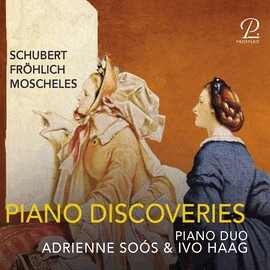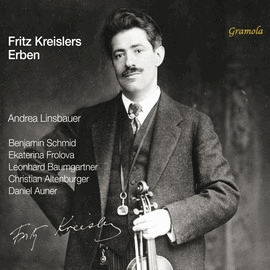Anne-Rose Terebesi spielt vier Moll-Sonaten von Muzio Clementi (1752-1832). Von diesem Komponisten gibt es heute einen stattlichen Katalog an Aufnahmen. In vielen wird er bloß als charmanter Komponist dargestellt.
Anne-Rose Terebesi spielt auf einem modernen Flügel, berücksichtigt aber die Regeln der historischen Aufführungspraxis. Ihr Spiel hat eine Farbpalette, in der auch die dunklen Farben für die Schattenseiten der Musik nicht fehlen. Sie mag nicht so intensiv spielen wie Andreas Staier (auf einem Fortepiano), aber in ihrer der Klangrede der sehr schnellen Sonatensätze finden sich Bachreferenzen ebenso wie hochklassischer Virtuosenstil. Daneben nehmen die langsamen Sätze auch auf die verzauberten Welten von Fields Nocturnes vorweg. Auch die manchmal grüblerischen Passagen sind gelungen. Das führt zu einer deutlichen Aufwertung der Sonaten, denn man muss sich bewusst sein, dass Clementis Musik, trotz des Erfolgs, den er zu Lebzeiten hatte, nicht so glücklich gealtert ist wie die von Mozart und Haydn, und es bedarf der ganzen Persönlichkeit der Interpretin, um den Hörer von der Bedeutung der musikalischen Inhalte dieser Sonaten zu überzeugen.
Anne-Rose Terebesi plays four sonatas in minor keys by Muzio Clementi (1752-1832). There is a quite rich catalog of recordings by this composer today, yet in many he is portrayed merely as a charming composer.
Anne-Rose Terebesi plays on a modern grand piano, but respects the rules of historical performance practice. Her playing has a color palette that does not lack the dark colors for the more somber sides of the music. She may not play as intensely as Andreas Staier (on a fortepiano), but in the very fast sonata movements there are Bach references as well as high-class virtuoso style. In addition, the slow movements anticipate the enchanted worlds of Field’s Nocturnes. The sometimes brooding passages are also successful. This leads to a marked appreciation of the sonatas, for one must realize that Clementi’s music, despite the success he enjoyed during his lifetime, has not aged as happily as that of Mozart and Haydn, and it takes all the personality of the interpreter to convince the listener of the importance of the musical content of these sonatas.


















